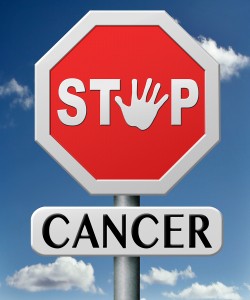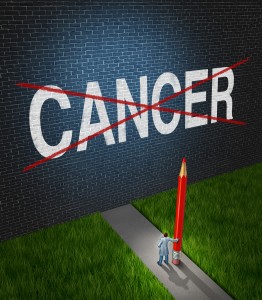Introduction
This article is about “multiple myeloma cured with measles vaccine”. For example, Mayo Clinic physicians were desperate when two patients with end stage multiple myeloma, a vicious bone tumor, did not respond to chemotherapy. With this in mind they tried something unconventional: high doses of the measles vaccine in an attempt to stimulate the immune system.
Canadian researchers had reported in 2011 that oncolytic viruses created by genetically modifying smallpox vaccine viruses would enter tumor cells of patients, but not damage normal cells. A high percentage of the end stage patients responded with tumor regression.
Use of modified measles vaccine
Now the Mayo Clinic clinicians used high doses of a modified measles vaccine. That is to say that this attacked the multiple myeloma cells of two end stage patients. It worked on at least one patient who was cancer free after a recheck of the bone marrow 6 months later. In addition, the other patient experienced a significant remission, something not heard of in an incurable end-stage condition. Here is the story as reported recently in the press. By all means, this research is a new beginning for cancer researchers as in the past the general thinking was that physicians must fight something as bad as cancer with something strong and toxic to get rid of the cancer cells. Chiefly, the emphasis was on “fighting the cancer cell”.
Stimulation of the immune system
Now the emphasis is to stimulate the immune system, which will fight the cancer much better. As a past cancer researcher I would say that it is about time to take this new approach as the old approach of attacking the cancer cell like an enemy with radiation and chemotherapy did not work well. The new thinking is: why not stimulate the immune system to such an extend that it becomes newly activated, but to such a degree that there is no chance for the cancer cells to fight back. I searched the recent literature on PubMed regarding this topic and came across several other interesting human clinical trials. They are all smaller, but very encouraging. Here is a brief summary of what I found:
Various cancer types
1. Prostate cancer vaccines
In this article a review of the use of various vaccines with dendritic cells, viruses, or DNA are described directed against the prostate-specific antigen on the surface of prostate cancer cells.
2. Pancreatic cancer
This cancer is very difficult to detect in the early stages and as a result the outlook for chemotherapy or radiotherapy is extremely poor. Doctors have tried several approaches as an alternative. Immunotherapy is an option and the Mayo clinic researchers have already announced that the measles vaccine approach will likely be applicable to pancreatic cancer treatment as well in the near future. However, other clinical trials are on the way to use other vaccination procedures.
3. Cervical cancer
The HPV (human papilloma virus) vaccine is targeting patients exposed to the high-risk HPV16 strain most often causing cervical cancer. However, researchers have noticed that in some cases a phenomenon called the “HPV immune escape” has allowed in some vaccinated women to still develop cervical cancer. A group of researchers investigated how improvements of the vaccine can trick the immune system to attack the HPV virus.
4. Brain tumors (glioblastoma multiforme)
This deadly brain tumor has a survival rate of only 15 months with conventional combination therapy. However, new anti-tumor vaccines are being tested in clinical trials, which already have shown much less toxicity than conventional therapies and they have longer survival times.
5. Melanoma treated with special vaccine
In the early 1970’s the anti tuberculosis vaccine BCG was used to find that about 25% of patients had long-term survival advantages with this adjuvant treatment. Recently several smaller clinical trials involving end stage melanoma patients utilizing various vaccines showed encouraging results with tumor regressions. Melanoma is a particularly vicious dark skin tumor. And yet, when messenger RNA (mRNA) was combined with dendritic cells and made into a vaccine, the antigen presenting T-cells that previously did not react against the melanoma tumor suddenly became very active destroying the tumors. This line of immune treatment is very promising and clinical trials continue to go on.
6. Another multiple myeloma treatment approach
Apart from the measles vaccine approach mentioned at the beginning of this blog, there is another approach that is being pursued at the Ohio State University Comprehensive Cancer Center where immune cells of patients with multiple myeloma are being modified in tissue culture to be more aggressive against a CS1 marker that is expressed on the surface of 95% of multiple myeloma cells in patients with this deadly cancer. Researchers modified T cells and grew them in culture. Subsequently physicians injected them back into patients. In mice this research team found that 100% of animals with these CS1 activated T lymphocytes were alive at 44 days after the start of this treatment. This compares favorably with 29% and 17% of two control groups. Researchers are starting a phase I clinical trial on patients with this method.
Conclusion
Several of the clinical trials on humans seem to be showing breakthroughs with better survivals than in the past. In addition it is also encouraging to see that these new treatment modalities are non-toxic treatments. They compare very favorably with traditional chemotherapy and radiotherapy methods. Mouse or other animal species may be a good first screening method. But there is a recognition among cancer researchers that the ultimate goal is to treat human patients. This means that cancer researchers need to concentrate on human cell lines and work with cancer patients. It will be interesting to see the outcome all of these trials and new approaches; hopefully we will see better survival rates for these patients in the near future.
More information on multiple myeloma: http://nethealthbook.com/cancer-overview/bone-cancer/multiple-myeloma/
Last edited Nov. 8, 2014







